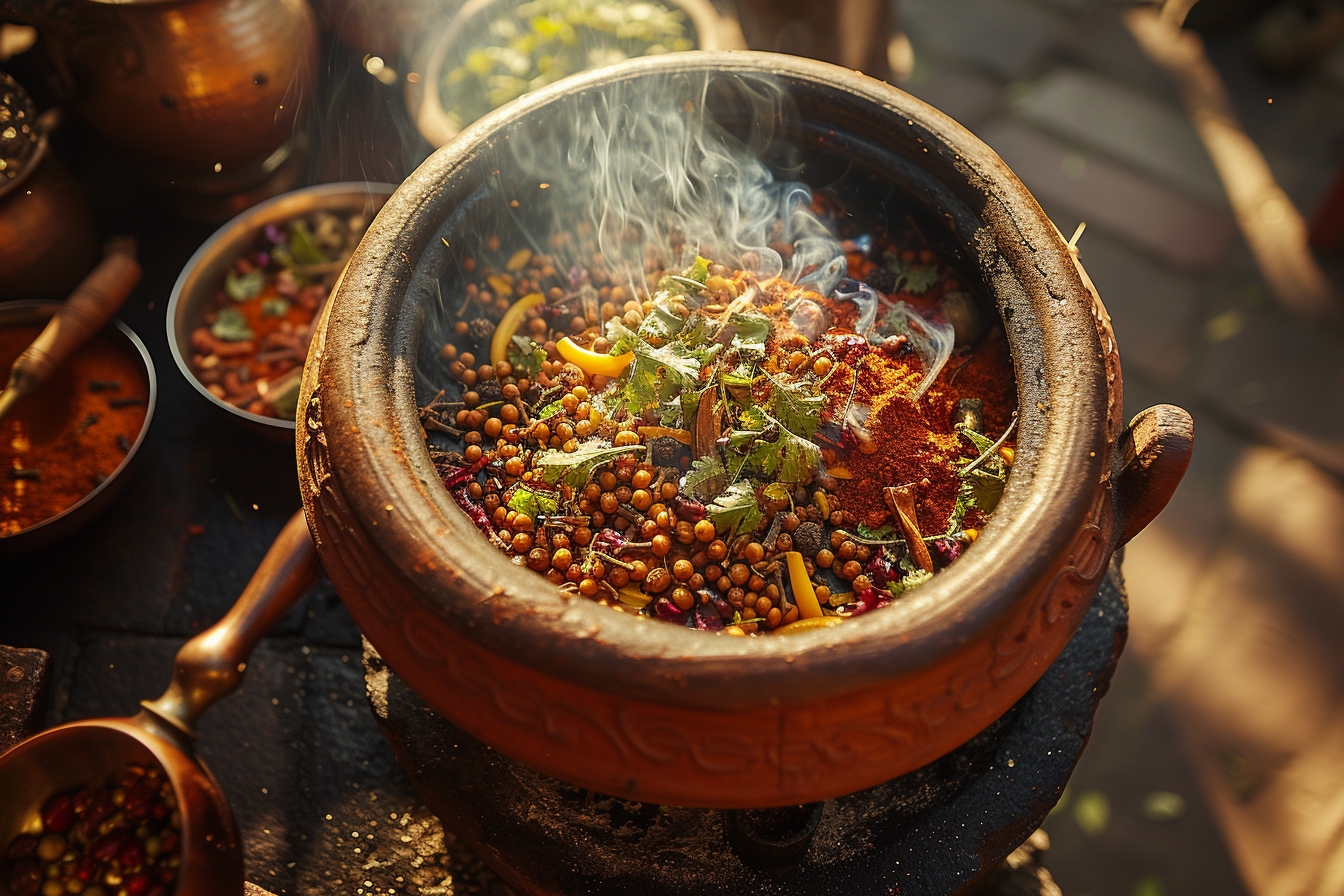The rich tapestry of Indian cuisine is steeped in a storied history and regional varieties, each with its unique flavors and cooking techniques. Traditional Indian cooking is more than a means to satiate hunger; it’s an art form that has been fine-tuned over centuries, deeply embedded in the culture and rituals of the country. The secrets to its authenticity lie in the traditional methods of preparation and cooking that have been handed down through generations. Embracing these methods is crucial for anyone looking to recreate the authentic taste of Indian meals.
Tandoor: the clay oven cooking
Tandoor cooking is perhaps one of the most recognizable Indian cooking methods. A tandoor is a cylindrical clay oven, used for baking and grilling. The oven is heated with wood or charcoal, bringing the temperature to a high level, and food is cooked by the radiant heat, smoking from the fuel, and the hot air circulating within the tandoor.
The marvel of marination
Culinary delights such as Naan bread, Tandoori chicken, and other marinated meats owe their flavors and textures to this traditional cooking method. Marinating these foods in spices and yoghurt for several hours tenderizes the meat and infuses it with robust flavors before it’s skewed and cooked in the tandoor, resulting in a smoky, charred exterior and a succulent interior.
Dum pukht: the art of slow cooking
Unlike the intense heat of the tandoor, Dum Pukht is a refined method of cooking in which food, typically meat, rice, and vegetables, is gently simmered in its juices, often in a sealed container. The slow cooking process allows the ingredients to mature and provides a harmonious blend of flavors and aromas.
Sealing in the aromas
The traditional method of sealing the cooking vessel, usually with dough, ensures that no steam escapes. This technique encapsulates the essence of the cuisine and highlights the subtle use of spices and aromatics for which Indian dishes are renowned.
Kadhai: wok-styled frying
The Kadhai or Karahi is the Indian wok, an indispensable part of a traditional Indian kitchen. It stands out for its deep, thick, circular shape and is primarily used for stir-frying, deep-frying, and sautéing.
The stir-fry phenomenon
Kadhai cooking involves tossing and turning spices, vegetables, or meats over high heat, which allows them to cook quickly while retaining their crunch and freshness. It’s a common method used for making many Indian curries, and the mixing of vegetables with spices forms the base for myriad dishes.
Handi: the terracotta pot cooking
Earthenware pots, known as Handi, are traditional vessels where the porous nature of clay plays a significant role in the cooking process. As with Dum Pukht, handi cooking involves slow-cooking, allowing for a deeper integration of flavors.
Less oil, more flavor
Typically, handi cooking requires less oil than other methods, as the slow simmering process naturally helps in forming a thick gravy base. Dishes cooked in a handi, like biryanis or kormas, are markedly different in flavor and texture from those cooked in metal pots.
Bhunao: the technique of roasting spices

A critical element of Indian cooking is the mastery of Bhunao. This technique involves roasting spices and ingredients on low heat to ensure that they release their maximum aroma and flavor.
Layering the flavors
The process is labor-intensive, requiring constant stirring to prevent burning. Bhunao not only heightens the flavors present but also allows multiple ingredients to come together seamlessly, creating a complex, layered taste profile.
Achaar: the fermentation magic
Fermentation holds a special place in Indian culinary practices, especially in the form of Achaar, or pickles. Indian pickles are not limited to one or two varieties but span a wide spectrum, from sweet and spicy mango pickles to tangy lemon and fiery green chili pickles.
Preserving traditional techniques
The making of Achaar involves sun-drying of fruits or vegetables, combined with a mix of spices and oil, allowing for fermentation to occur naturally. This centuries-old method not only preserves seasonal produce but also serves as a digestive aid and flavor enhancer to meals.
The richness of regional variations
It’s paramount to acknowledge that these traditional cooking techniques harbor numerous regional variations. From the spicy fish dishes of Bengal and the coconut-laden curries of Kerala to the desert cuisine of Rajasthan, each region imparts its signature twist on these methods. The diversity is boundless and reflects the culinary riches India offers to discerning gourmands.
Embracing authenticity in cooking
Embracing these traditional Indian cooking methods does more than just justice to the ingredients; it acquaints one with the deep historical roots and the intrinsic flavor profiles that define Indian cuisine. It’s a journey marked by the discovery of spices, the understanding of heat and balance, and the patience required to convey real Indian flavors onto a plate. Truly, the soul of Indian cooking cannot be captured through shortcuts and modern appliances; it flourishes when traditional methods and unhurried techniques steer the culinary course.
Familiarizing oneself with these time-honored methods opens up a vista of Indian cooking that not only tantalizes the taste buds but also enriches the cooking experience. Cooking connoisseurs and home chefs alike find in these methods a touchstone to crafting meals that radiate authenticity and speak of the very essence of Indian gastronomy. So, to capture the heart of Indian cuisine, plunge into its traditional cooking practices and let the flavors unfold on their own, timeless pace.
